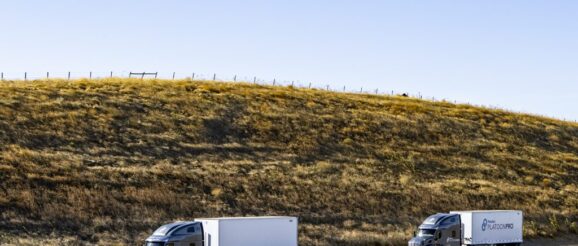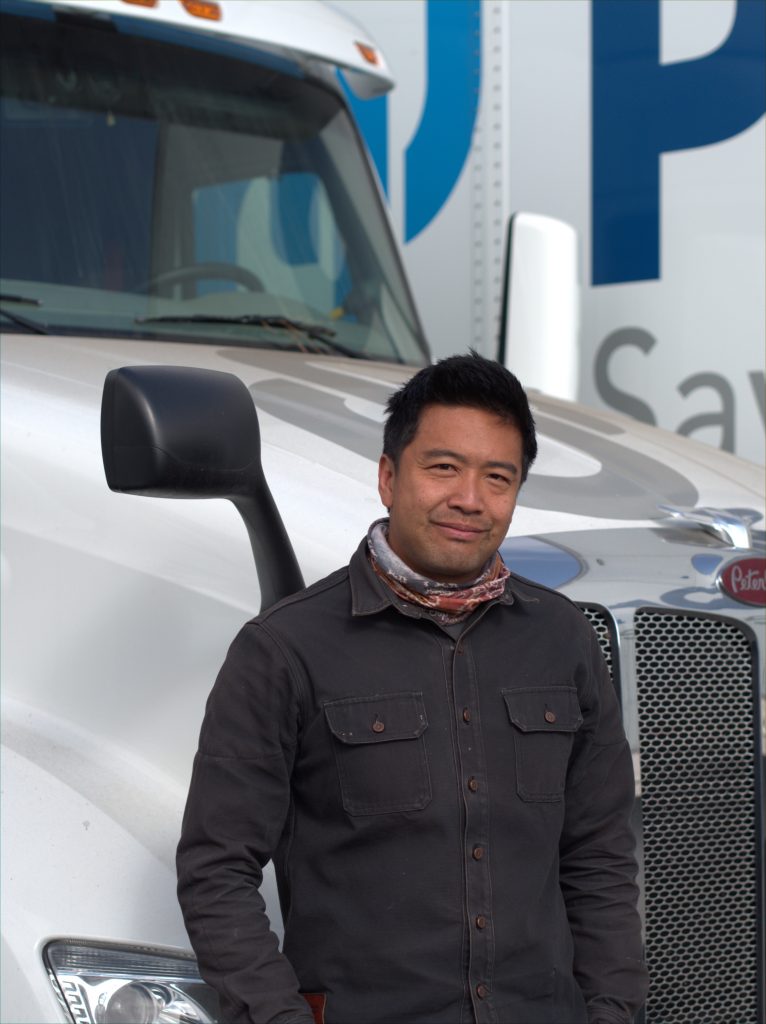Empathy Fuels Innovation on the Road to Automation


It was a darkness like nothing I’d ever imagined.
I was deep underground, thousands of feet below the earth, in a gold mine far up in the Northwest Territories. Then they turned off the lights–all the lights.
As the seconds ticked by, my fear began to build. Then someone flipped a switch, and the lights came back on.
My host turned toward me. With a sweeping gesture that took in the brilliantly lit surroundings, he said, “Russell, do you know why your light is so great?” I shook my head. “Your light is great because down here, we can tell gold from dirt.”
I nodded. I understood.
It was at that moment, as light filled the mine shaft and lifted me out of total darkness, that I first truly appreciated the beauty of light. I understood that light isn’t about brightness; it’s about how it makes you feel. At a primal level, light makes us feel safe. And when you have really good light, when you can see things truly, it gives you a sense of confidence.
Since then, I’ve introduced many different products. Over the course of my career,I have had the pleasure of working with some very talented product designers and developers on an array of technological solutions, from environmental control systems to medical devices for breast biopsies, to robots and drones, and now, to automated vehicles.
But I’ve never forgotten the feeling of that moment deep in the gold mine. We had this really awesome technology, this thing that no one else had. What we lacked until then was a true understanding of the user environment and the problems faced by real people on a daily basis. It drove home the importance of empathy in innovation, which remains a guiding principle for me as I help to introduce technology into really tough environments, like gold mining—and trucking.
Peloton’s Mission is to Solve Tough Problems
As a product manager, I help teams build products that solve customer problems. I help figure out what we need to build and how to turn ideas into reality to achieve both short term and long term goals.
Trucking is a tough industry, and I know from experience that introducing technology into tough industries requires commitment. It requires grit. It requires belief.
And, because the problems are really hairy, you need a team of people who can empathize with users and think strategically about how your technology can solve their problems. You also need a team with the grit and tenacity to bring those solutions to light.
That’s what I’ve found here at Peloton: People who believe in using our technology to create safe and effective solutions for the trucking industry.
We know why we’re here.
We are here to help fleets haul more freight, safely. We are here to help fleets solve problems today, and we will be here for the long haul.
All fleets, big and small, are facing similar challenges: driver shortages and turnover, HOS rules, the problems caused by an aging infrastructure, the increasing number of distracted drivers, and the rising volume of residential deliveries.
To help solve these challenges, Peloton is building a pathway to take fleets from Level 1 automation to Level 4.
Platooning is solving problems today
Our Level 1 PlatoonPro system enables two-truck platoons so fleets can realize fuel savings today. Through our PlatoonPro Experience program, fleets have seen first hand how platooning fits into their day-to-day operations. It has also given us the opportunity to connect with our users and better understand their challenges.
Platooning also offers fleets the opportunity to boost their existing driver training programs. With the system reliably maintaining the gap between trucks, and a private radio channel assisting partnered drivers to drive as a team, the follow driver can focus on steering and monitoring road conditions. With a more experienced driver in the lead, the follow driver–whether they’re a newly trained platooning driver or just new to the route–can be learning on the job.
Regardless of a driver’s experience, both fleets and drivers benefit from the teamwork environment provided by platooning.
We think in terms of human-led automation.
We design for improved productivity. For now and for the foreseeable future, this means keeping the driver in the driver’s seat.
Why? Because the biggest factor in on-time delivery is still the driver. All the technology in the world today can’t get the load delivered. The driver is the eyes and ears in the vehicle, making decisions and figuring out how to deal with day-to-day issues, like congestion and bottlenecks — or vehicle problems.
Peloton AutoFollow is illuminating the path forward
We’re not just solving problems today, we’re also looking down the road and asking ourselves how we can apply truck automation technology to solve industry problems 10 years from now.
We’re having conversations about how our technology can help solve industry problems caused by the nation’s aging infrastructure, namely congestion and bottlenecks.
As we build a bridge from Level 1 to Level 4, each progressively autonomous product will solve progressively difficult problems.
And, because we believe in the value of the professional driver, we focus on applying technology where it will have the most impact. That means we design to both improve the driver experience and increase driver productivity at each step along the way.
By the time we get to Level 4 automation, drivers will be able to haul more freight, but they will also be learning new skills. A professional driver is still leading the platoon, with the AutoFollow system operating the follow truck. Aided by Peloton technology, one driver can effectively pilot two trucks.
We also understand that, in the real world, technology has its limits, so we don’t let our enthusiasm blind us to our customers’ ultimate goal, which is to deliver the load. Our PlatoonPro and AutoFollow systems are designed so that a Peloton-equipped truck can still be driven as a normal truck, by a human driver.
Think about the possibilities. We do.
We envision a future where advanced steering and sensing technology can improve the driving experience under the two most challenging conditions: congestion and bad weather. A vehicle piloted by Level 4 automation could potentially allow drivers to get more done within HOS time limits, providing a productivity boost to drivers and fleets. We will be working closely with the FMCSA as part of introducing technology that makes major improvements to roadway safety.
We can even imagine getting to the point where our technology helps improve traffic flow, easing congestion, and making roadways faster and safer. As technology enables more vehicles to communicate and coordinate together, connected vehicles could begin to move together in harmony, like a school of fish. It’s the type of solution that can only be possible if the vehicles know how to behave around each other. And Peloton is one of the companies leading that effort today.
At the end of the day, it’s about solving real problems
One of the highlights of my job is getting to watch someone actually use our products. And it’s an amazing feeling to see the look on their face that tells you you’ve hit the nail on the head: you’ve solved a real problem for them.
I have seen that look on the faces of drivers and fleet managers who have experienced Peloton platooning. It reminds me of the feeling I had in that gold mine when I first truly appreciated the beauty of light. That’s how I know I’m doing my job really, really well.
Want to know more about Peloton’s innovative technology and how it can help solve your fleet’s problems? Contact us at [email protected]
The post Empathy Fuels Innovation on the Road to Automation appeared first on Peloton Technology.
